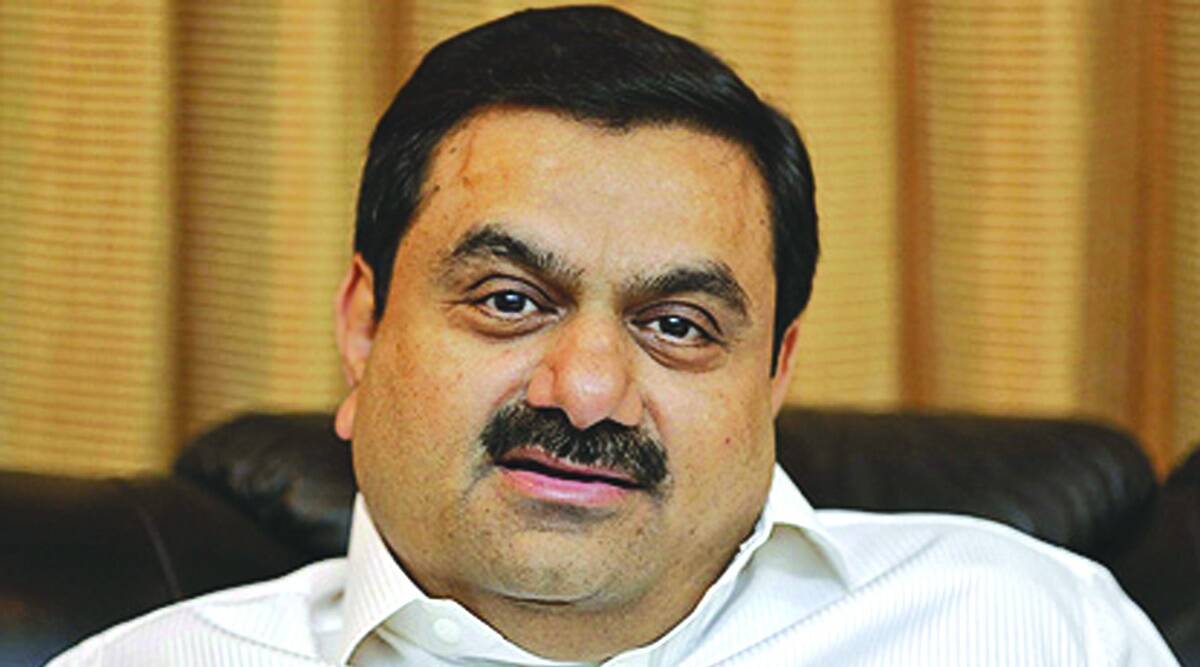The largest borrower of the country’s banks is the world’s fourth richest Adani group

It is also an irony that Gautam Adani, who announced to donate ₹60,000 crore on his 60th birthday, has sought a loan of ₹14,000 crore from State Bank of India. The Adani Group will make an initial investment of Rs 19,000 crore for setting up a PVC plant in Mundra, Gujarat, for which the Adani Group has sought a loan of Rs 14,000 crore from state-run SBI. The Adani Group already has a debt of Rs 2.21 lakh crore. Aam Aadmi Party’s Sanjay Singh has directly accused Narendra Modi of waiving ₹72,000 crore by the government and banks.
In technical or banking parlance, write offs, NPAs or loan waivers or whatever it may be, the Adani Group has been getting generous loans since 2014, and banks have been writing off their loans. The government or to put it more clearly, the grace of Prime Minister Narendra Modi ji was on this group and this industrialist as soon as he came to power in 2014, which is continuing till now. While 80 crore people of the country are doomed to live on 5 kg ration, and the country has gone down in poverty even below Nigeria, Gautam Adani even beat Bill Gates in his wealth growth. This is a shameful sight of the obscene aggregation of capital. This is a gross failure of the government’s economy.
The Adani Group continues to use its policy of taking loans and financing to expand its existing business empire and expand new industries and explore other possibilities. According to data on capitalisation, the combined gross debt of the Adani group companies reached a high of ₹2.22 lakh crore at the end of March 2022 this year, from ₹1.57 lakh crore a year ago. That is, the combined gross debt of the Adani Group grew by 42 per cent in one year. That is, the Adani group took loans generously and the banks also showed generosity with enthusiasm in giving loans to that group.
As a result, the Adani Group’s Gross Debt Equity Ratio rose to 2.36 at the end of March 2022, a four-year high. The same debt equity ratio, which stood at 2.02 a year ago and 1.98 at the end of FY19. In 2017, public sector banks, ie state-run banks, also helped the conglomerate and this help was in the form of write-off of ₹72,000 crore, which is mentioned by Sanjay Singh.
As generously as the public sector banks gave loans to the Adani group, these same banks also wrote off that loan, which is not a loan waiver in banking terminology, but it is also as relief as loan waiver. Such write-off or NPA loans are rarely, or have ever been, recovered. You may also get some figures for their recovery, but when you see the ratio of the amount written off / NPA and the amount of their recovery after write off / NPA, you will find that, the amount of debt written off / NPA was done In comparison, the recovery is very less. And such figures are not even available on the websites of banks.
If someone asks by applying RTI, he hardly gets a completely satisfactory answer. Regarding the details of loans given to the Adani Group, there is also a directive that the same cannot be made public. Why this is so, only the Finance Ministry and the banking sector will be able to tell. Here it is also pertinent to remind you that, after the Supreme Court has repeatedly asked that the list of loan defaulters be made public, the government has shied away from doing so by making some excuse or the other. Why this was done, this government would have known better.
The debt-to-equity ratio, i.e. the debt debt-to-equity ratio (D/E), is used to evaluate a company’s financial leverage, and is calculated by dividing the company’s total liabilities by its shareholder, equity. Is performed. The (D/E) ratio is an important parameter used in corporate finance. This is an indication of the extent to which the company is financing/capitalizing its business through debt versus wholly owned funds. In a specific way, it refers to the ability of a shareholder to cover all outstanding debts in the event of a downturn in the business. Actually, debt-to-equity ratio is a specific type of gearing ratio, i.e. the ratio of capital raised.
A higher profit ratio indicates a company or stock with more risk for shareholders. However, the D/E ratio is difficult to compare across industry groups where the ideal amount of credit will vary. The D/E ratio measures a company’s debt to its net asset value, which is mostly used to estimate the extent to which a company can take out debt as a means of leveraging its assets. has been A higher D/E ratio is often associated with higher risk, which means the company is funding its growth through debt. If too much debt was taken out to finance the growth, it could mean that the company could have generated more income than it would have been without that financing.
It is not that only the Adani group expands its business by taking loans, but it is an established process of capitalization of corporates across the world. These loans are either given by banks or financial institutions or companies raise money from equity. Adjusted for cash and bank balances available with various group companies, the group’s net debt-to-equity ratio increased to 2.07 at the end of FY 2021- 22, the highest since FY 2017-18. Adani Group companies were sitting on cash and bank balances of Rs 26,989 crore as of the end of March 2022. In contrast, the listed Tata group companies reported a combined gross debt of ₹3.35 lakh crore at the end of March 2022 this year, down 1.3 per cent year-on-year. The group’s gross debt-to-equity ratio declined to 1.01 in FY22 from 1.2 a year ago.
The analysis is based on the combined finances of seven listed Adani Group companies – Adani Enterprises, Adani Ports & SEZ, Adani Power, Adani Transmission, Adani Green, Adani Total Gas and Adani Wilmar. Adani Ports is yet to declare financial results for the fourth quarter of FY22 and FY22. Reliance Industries’ gross debt finance ratio, on a consolidated basis, rose to Rs 2.82 trillion at the end of March from 4.2 in 2012.
According to media reports, the debt of Adani Group increased by 40.5 percent in the financial year 2021-22, to reach ₹ 2.21 lakh crore. It was ₹1.57 lakh crore in the last financial year 2020-21. In the financial year 2021-22, the debt of Adani Enterprises has grown the most, at 155 percent. During this period, the company’s debt increased to Rs 41,024 crore. However, the debt of Adani Power and Adani Wilmar has come down. Adani Power’s borrowing declined by 6.9 per cent to Rs 48,796 crore in 2021-22. Similarly, the debt of Adani Wilmar declined by 12.9 per cent to Rs 2568 crore.
Now let’s take a look at the banking sector. Data from the Reserve Bank of India (RBI) shows that public sector banks have written off loans worth Rs 6.67 lakh crore since 2010. This is about 76% of the total debt write-offs. The write offs of private banks account for 21% of the total write offs. Foreign banks have written off loans worth Rs 22 thousand 790 crore during this period. This accounts for 3% of the total write offs. In the financial year 2019-20, these banks have written off a total loan of Rs 2.37 lakh crore. This is a quarter of the write offs of the last 10 years. Out of this, Rs 1.78 lakh crore is of government banks while Rs 53 thousand 949 crore is of private banks.
The country’s largest bank State Bank of India has done maximum write-off. It has written off loans worth Rs 52 thousand 362 crore in the financial year 2020. After this, Indian Overseas Bank has written off loans worth Rs 16 thousand 406 crore, Bank of Baroda 15 thousand 886 crore and UCO Bank 12 thousand 479 crore.
ICICI Bank has written off the maximum loan among private banks. It has written off debt of Rs 10 thousand 942 crore. Axis Bank has written off a loan of Rs 10 thousand 169 and HDFC Bank Rs 8 thousand 254 crore. The writing off of debt also creates a tension in the banking system. Because this money is not returned and then banks have to take another route for this.
According to the Reserve Bank’s report, the total bad bad debt (gross NPA) of banks was 9.1% in March 2019, which has been 8.2% in March 2020. Much of this contribution has been from similar write-offs. The majority of banks’ NPAs are loans above Rs 5 crore. Their share in the total NPAs is about 80%. Another important fact that has come out from the RTI is that, the NDA government at the Center has waived loans worth about Rs 11 lakh crore in the last 7 years, which is 5 times more than that of the UPA government. This has been disclosed in the RTI and from this it can be understood about the weakening condition of the banks.
Former Reserve Bank Governor Dr Raghuram Rajan and former Deputy Governor Viral Acharya have written a research paper on the condition of the Indian banking sector on the plight of the banking sector. In which, while discussing the problems and solutions of the banking sector of the country, many such avenues have been suggested, so that this sector can be strengthened. They have focused their attention exclusively on public sector banks. Raghuram Rajan had also given information about this research paper through his LinkedIn account.
In this paper, both the economists have first tried to know why the banking sector in India has been going through a period of challenges during the last few decades, especially the government banking sector. In fact, the problem of bad loans is more in public sector banks than in private sector banks. Most of these funds are not recoverable. He also mentioned about the institutional complexities in the sector. This is also a problem in the resolution of bad loans in India. He has also told how the problem of bad debt in India for many decades can be solved.
In this, he has specially focused on dealing with bad loans, improving public sector banks, alternative ownership of public sector banks, improving risk management of banks and better diversity in banking structure. . In this research paper, he has also said that many of these things have been suggested before. There is also a mention of PJ Nayak Committee in the year 2014. The central government had tried to implement the recommendations of this committee in 2015 in the form of ‘Gyan Sangam’.
These recommendations were related to the creation of Banks Board Bureau for appointments in public sector banks and empowering the boards of banks. Prime Minister Narendra Modi himself had also agreed to this. But, even after 5 years there is no improvement in the situation. It is almost three years since the Rajan report came, but still no concrete steps have been taken regarding the functioning of the banks, the way it is affecting the banking sector is also visible.






